
Anna Maria Magnani was an Italian actress. She was known for her explosive acting and earthy, realistic portrayals of characters.
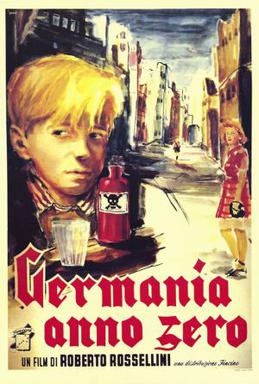
Germany, Year Zero is a 1948 film directed by Roberto Rossellini, and is the final film in Rossellini's unofficial war film trilogy, following Rome, Open City and Paisà. Germany Year Zero takes place in Allied-occupied Germany, unlike the others, which take place in German-occupied Rome and during the Allied invasion of Italy, respectively.
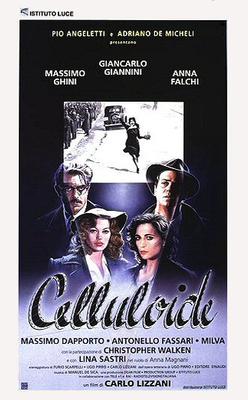
Celluloide is a 1996 Italian historical drama film directed by Carlo Lizzani from a screenplay by Furio Scarpelli, Ugo Pirro and Lizzani, based on the 1983 novel of the same name by Pirro. It stars Giancarlo Giannini, Massimo Ghini, Anna Falchi, and Lina Sastri.

Nino Besozzi was an Italian film actor. He appeared in more than 50 films between 1931 and 1970. He was born in and died in Milan, Italy.

Assunta Spina is a 1948 Italian drama film directed by Mario Mattoli and starring Anna Magnani, Antonio Centa and Giacomo Furia. It was adapted from Salvatore Di Giacomo's 1909 play of the same title. It was released in the United States with the title Scarred. It was shot at the Farnesina Studios in Rome and on location in Naples. The film's sets were designed by the art director Piero Filippone. Distributed by Titanus it earned around 70 million lira at the domestic box office.
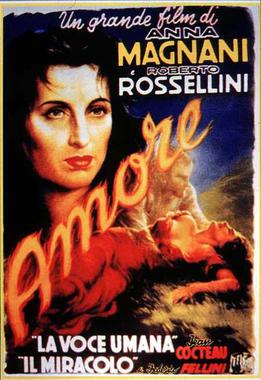
L'Amore ('Love') is a 1948 Italian drama anthology film directed by Roberto Rossellini starring Anna Magnani and Federico Fellini. It consists of two parts, The Human Voice, based on Jean Cocteau's 1929 play of the same title, and The Miracle, based on Ramón del Valle-Inclán's 1904 novel Flor de santidad. The second part was banned in the United States until it was cleared in 1952 by the Supreme Court's decision upholding the right to freedom of speech.

The Assassin of Rome is a 1972 Italian historical drama film directed by Damiano Damiani. The film tells, with some historical licenses, the story of Gino Girolimoni, wrongfully accused of a series of child murders that occurred in Rome between 1924 and 1928.

Department Store is a 1939 Italian "white-telephones" comedy film directed by Mario Camerini.

Giovanni Falcone is a 1993 Italian biographical drama film written and directed by Giuseppe Ferrara. It is based on real life events of the prosecuting magistrate Giovanni Falcone who was killed by mafia in 1992.

Marisa Vernati was an Italian actress.

A Pilot Returns is a 1942 Italian war film directed by Roberto Rossellini and starring Massimo Girotti, Michela Belmonte and Piero Lulli. The film forms part of Rossellini's "Fascist trilogy" along with The White Ship (1941) and The Man with a Cross (1943). It was made with the co-operation of the Italian Air Force. The film's sets were designed by the architect Virgilio Marchi.

Eternal Melodies is a 1940 Italian historical drama film directed by Carmine Gallone and starring Gino Cervi, Conchita Montenegro and Luisella Beghi. It was one of several musical biopics directed by Gallone. The film was shot at Cinecittà in Rome.

Peddlin' in Society or Down With Riches! is a 1946 Italian romance-drama film directed by Gennaro Righelli. it was a loose sequel to the 1945 film Down with Misery by the same director and also starring Magnani.
Events from the year 1908 in Italy.
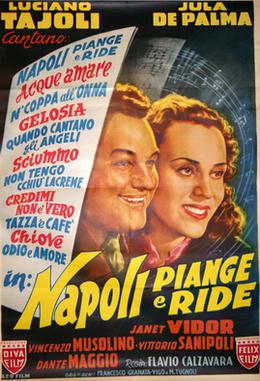
Napoli piange e ride is a 1954 Italian musical melodrama film written and directed by Flavio Calzavara and starring Luciano Tajoli and Jula De Palma.

La signorina is a 1942 Italian "white-telephones" romantic drama film directed by László Kish and starring Loredana and Nino Besozzi. It is based on a novel by Gerolamo Rovetta.

Rossini is a 1942 Italian musical drama film directed by Mario Bonnard and starring Nino Besozzi, Paola Barbara, Camillo Pilotto, Armando Falconi and Greta Gonda. It depicts adult life events of Italian composer Gioachino Rossini. The film is also known as Arte ed amori di Giaocchino Rossini.

Departure is a 1938 Italian comedy film directed by Amleto Palermi and starring Vittorio De Sica, María Denis and Giovanni Barrella. It was shot at the Cinecittà Studios in Rome.
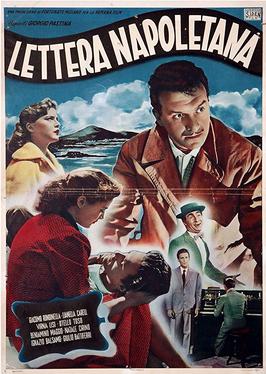
Letter from Naples is a 1954 Italian musical melodrama film directed by Giorgio Pastina and starring Giacomo Rondinella, Virna Lisi and Otello Toso.

Be Seeing You, Father is a 1948 Italian period comedy film directed by Camillo Mastrocinque and starring Gino Bechi, Mariella Lotti and Silvana Pampanini. The film's sets were designed by the art director Ottavio Scotti. The film was a breakthrough for Pampanini, who outshone the more established female star Lotti and rapidly gained appeal at the box office.

















